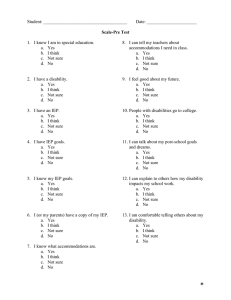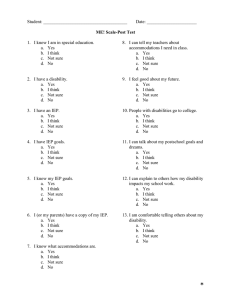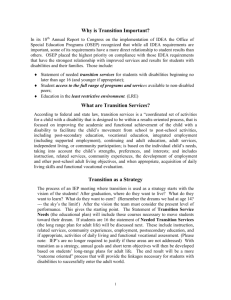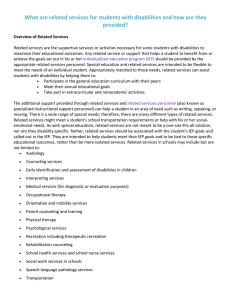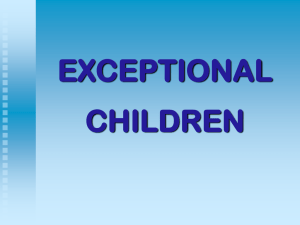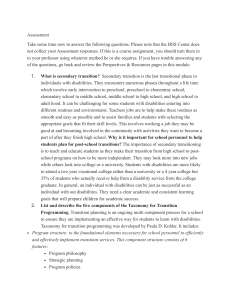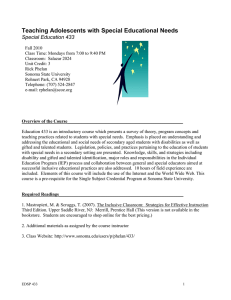Transition Handout
advertisement
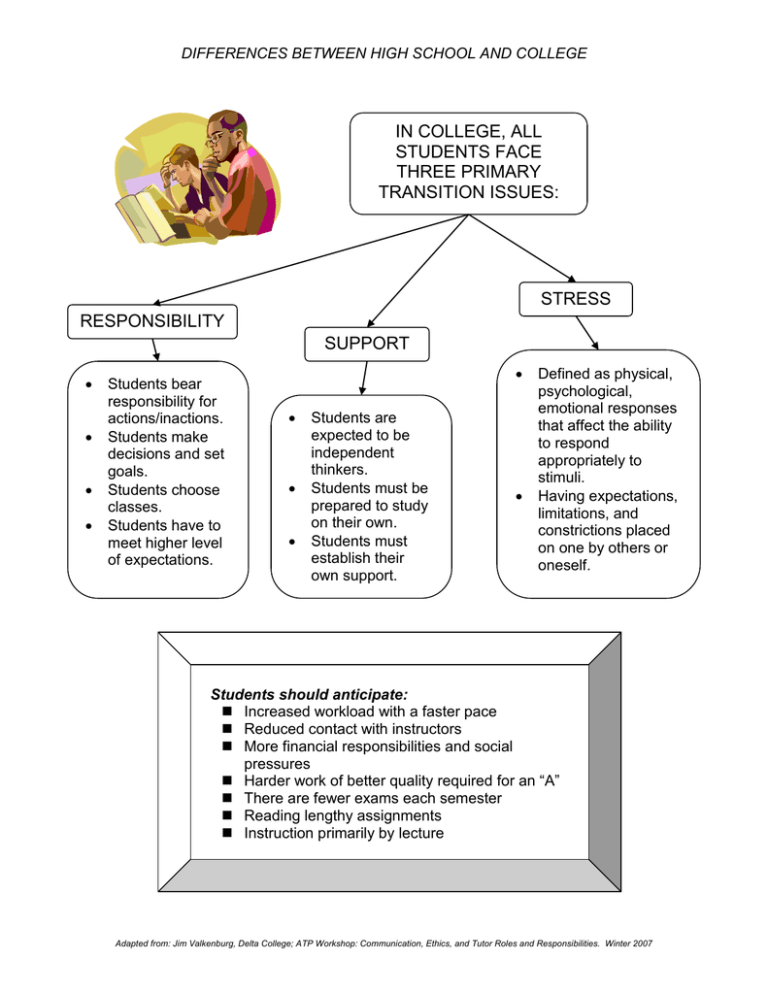
DIFFERENCES BETWEEN HIGH SCHOOL AND COLLEGE IN COLLEGE, ALL STUDENTS FACE THREE PRIMARY TRANSITION ISSUES: STRESS RESPONSIBILITY SUPPORT Students bear responsibility for actions/inactions. Students make decisions and set goals. Students choose classes. Students have to meet higher level of expectations. Students are expected to be independent thinkers. Students must be prepared to study on their own. Students must establish their own support. Defined as physical, psychological, emotional responses that affect the ability to respond appropriately to stimuli. Having expectations, limitations, and constrictions placed on one by others or oneself. Students should anticipate: Increased workload with a faster pace Reduced contact with instructors More financial responsibilities and social pressures Harder work of better quality required for an “A” There are fewer exams each semester Reading lengthy assignments Instruction primarily by lecture Adapted from: Jim Valkenburg, Delta College; ATP Workshop: Communication, Ethics, and Tutor Roles and Responsibilities. Winter 2007 DIFFERENCES BETWEEN HIGH SCHOOL AND COLLEGE Students with Disabilities The Americans with Disabilities Act and Section 504 of the Rehabilitation Act of 1973 ensure that no otherwise qualified person with a disability is denied access to, benefits of, or is subject to discrimination solely on the basis of disability. At the college level students with disabilities must self-declare and provide recent and adequate documentation of their disability to the Disability Services Office of the college in order to request reasonable accommodations. The student must take the first step of selfadvocacy by making sure they go to the appropriate offices. High School IDEA applies. IEP developed and sufficient for documentation. Testing done by school. Eligibility for services is driven by diagnosis. Classes meet daily. Attendance is legally mandated. School, community, and family accept consequences of non-attendance. Transportation provided. Most work done in class. Teachers, staff prompt students about grades. Class time devoted to answering questions and explaining material. School occurs during set hours. Often in same classes as peer groups. Sometimes students know same friends from elementary school through high school. Classroom ratios limit the number of students/teacher, allowing a more personal connection. Students see the same teachers every day. College ADA and Section 504 apply. No IEP required. IEP not sufficient for documentation. Testing may or may not be available at the school site; documentation must be provided in order to receive services. Eligibility for services is driven by “severity of impact on a major life activity” Classes meet once/twice a week. Attendance is the student’s responsibility. Student accepts consequences of nonattendance. Transportation must be determined by student and factored into class schedule. Most work done outside of class. Student must monitor own progress. Class time devoted to presenting new material; questions expected to be asked during office hours. Student can pick classes for morning, afternoon, or evening. Different classes mean different peer groups in each class. Takes more effort to meet and make friends. Also, students may be away from home for the first time. Classes can range from 40-400 students/teacher, depending on the college and the class. Students see faculty less. This document is available in alternate formats upon request by contacting sswd@csus.edu. Adapted from: Jim Valkenburg, Delta College; ATP Workshop: Communication, Ethics, and Tutor Roles and Responsibilities. Winter 2007

